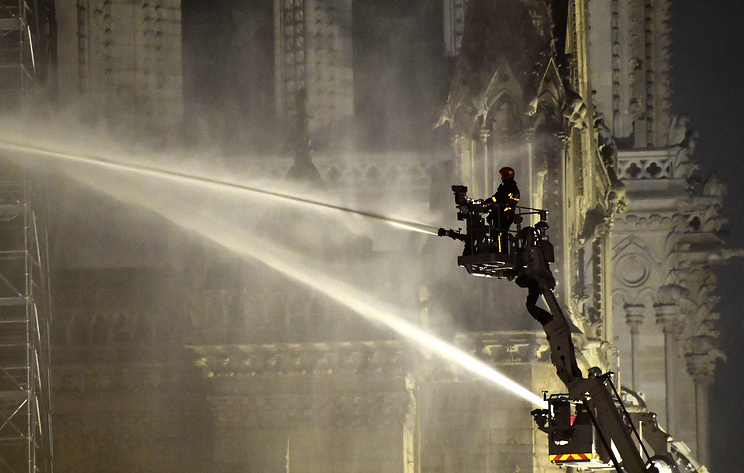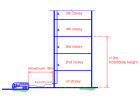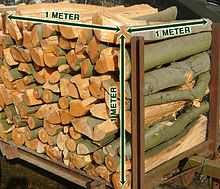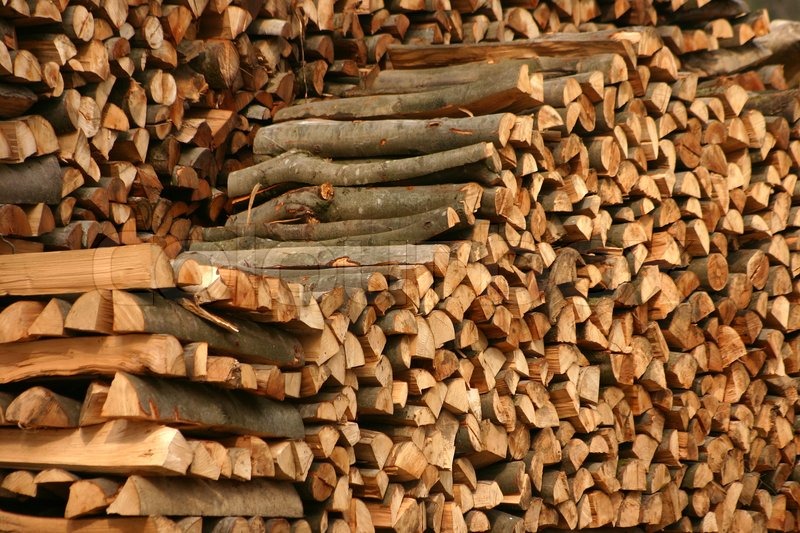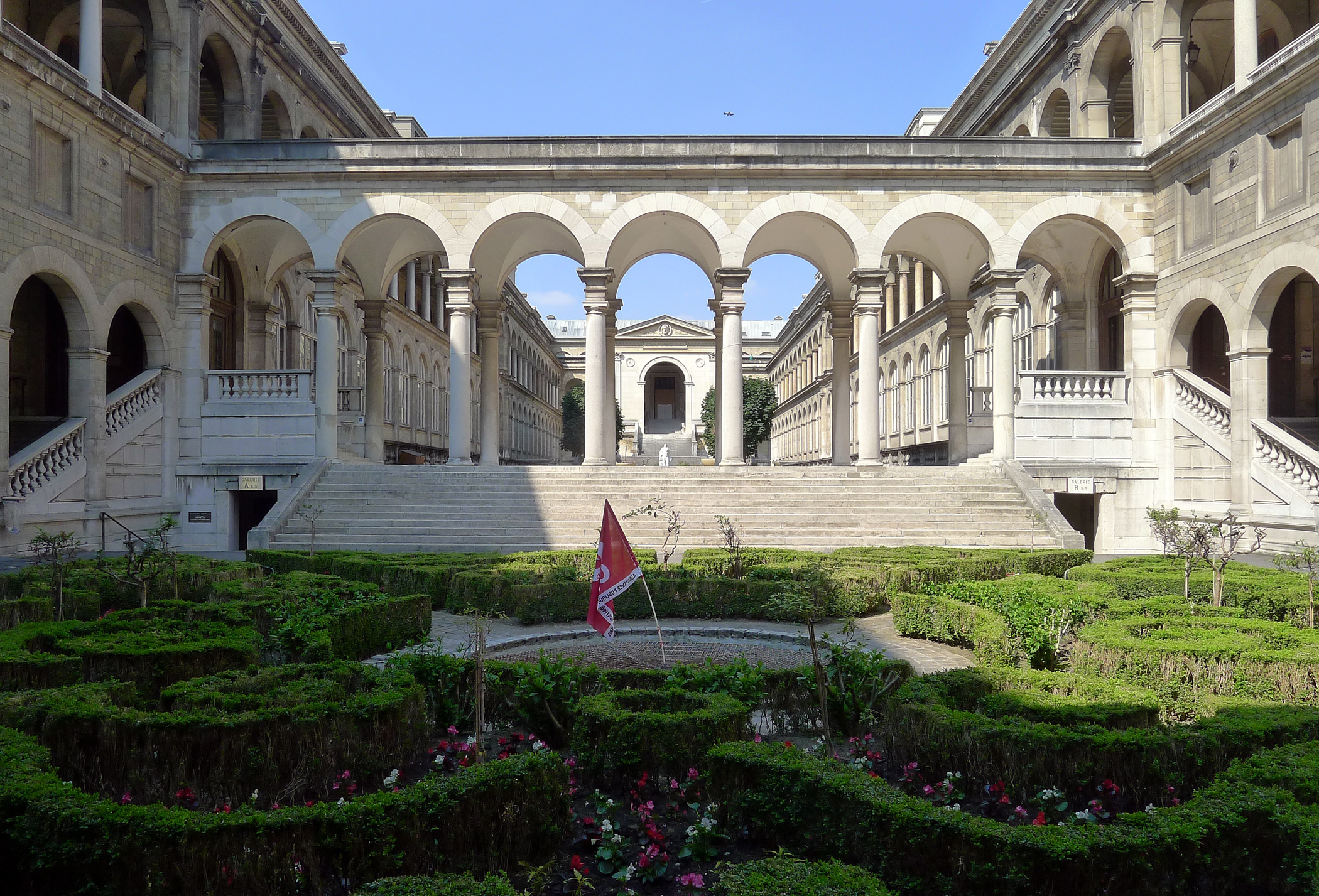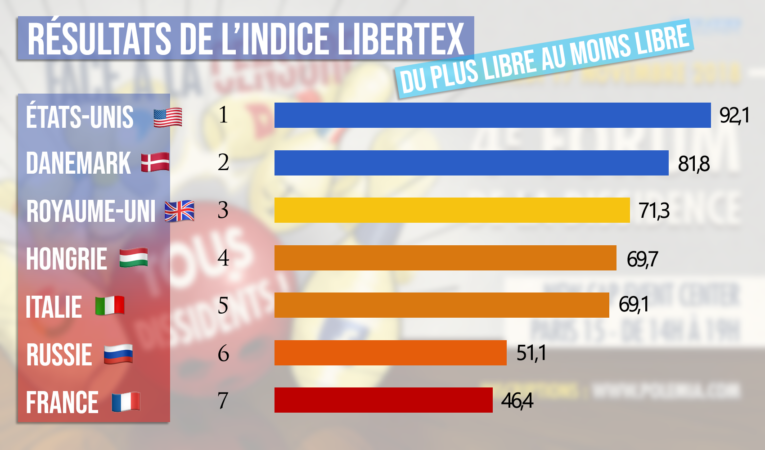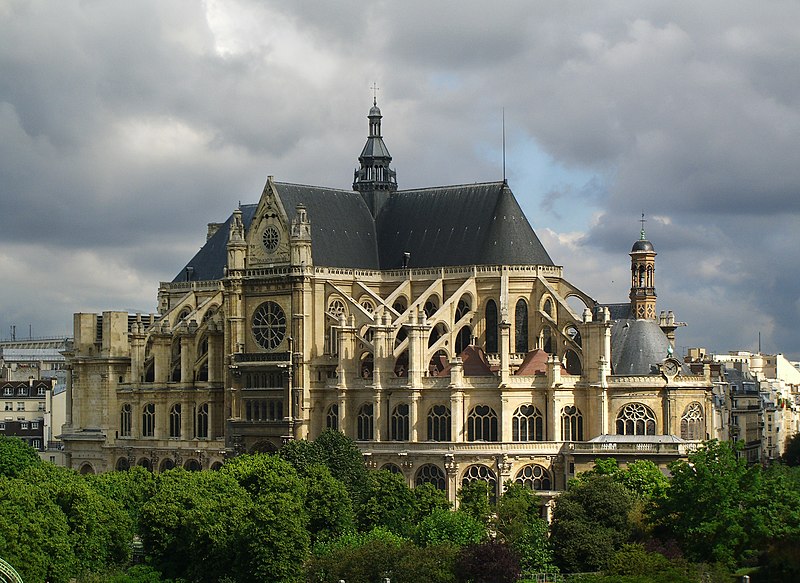About this project for a global re-building of the Ile de la Cité, hereafter a short 3D video named "Mission Île de la Cité, the heart of heart" showing what it could/will be to walk on the South Promenade, and from the architect's Youtube account Dominique Perrault (the very same
from a previous comment on the thread), the architect and urban planner who designed "The Great Library François Mitterrand":
The Ile de la Cité is classified as a UNESCO World Heritage.
Fire ravages Notre Dame Cathedral in Paris, a UNESCO World Heritage Site
Tuesday, 16 April 2019
“Notre Dame represents an architectural, cultural and religious heritage,
a unique literary heritage that speaks to the whole world,” said Ms. Azoulay. The cathedral is widely regarded as the most beautiful example of French Gothic architecture, which includes innovative use of the rib vault and buttresses, colored stained glass rosettes and sculptural decorations. Construction of the church began in 1160 and continued for a century.
The Director-General also announced that a rapid assessment of the damage would take place as soon as possible. “We are already in contact with experts to assess damage, preserve what can be preserved and consider measures in the short and medium term,” she said.
The assessment would be undertaken with the authorities concerned, including national, local, site management and Church authorities to develop an appropriate plan in order to avoid further damaging the site and to recover as much as possible of the original elements. Subsequently UNESCO would accompany and support the authorities in the recovery, rehabilitation and rebuilding of the damaged heritage site based on accurate documentation based on archival material, photos, films, historic documentation, plans and drawings.
Well, Unesco and Church authorities might be involved in this secret/not secret anymore project as a whole benefice for everyone involved, including all the societies whom have so generously made donations, societies that
angelburst29 listed here.
I cannot believe that Church authorities were not aware of this and the fire of Notre-Dame could have been occured without at least some of them knowing the real intention?
The Rector of Notre-Dame de Paris, Bishop Patrick Chauvet, announced that he would "file a complaint" for "invasive destruction".
... "the cathedral belongs to the state. Inside the furniture, we have chairs, sound system, projectors... It belongs to us and it no longer works. I will have to file a complaint with the State so that the insurance can work and at the same time so that I know exactly what happened.
The Rector assures that the complaint will be filed for "unintentional destruction because I don't think there is anyone who wanted to set the fire". According to him, it's "either recklessness or a short circuit."
Really? Carelessness, or short circuit???
The Church is now filled with the same Mammon worshippers, it seems to me.
The list of donations for the re-built of Our Lady is still ongoing:
The Serbian government has decided to make a donation of one million euros
one million euros to help rebuild Notre-Dame de Paris Cathedral, a decision that "confirms the century-old friendship with the French people".
Belgrade "expresses the wish that this symbol of French civilization and the world be rebuilt as soon as possible and that this temple of culture be reopened to its future admirers," says a government statement.
The works of arts and relics saved from the fire at Notre-Dame were first transferred to the Paris City Hall and then to the Louvre Museum.
The Louvre Museum where stands the pyramid with its 666 facets where Macron delivered his inaugural speech in May 2017. I am not sure that all these works of arts and relics will return to Notre-Dame...
In 2018, it
"seems" that Parisians asked themselves "what could become" the Ile de la Cité (Really?):
- Private real estate transactions?
- Large commercial locations?
- New luxury district in Paris?
- Re-allocation of offices to new services?
Maybe all of it!!
At the time of
this article (2018), here is what was known:
The known calendar of movements currently posits that:
- the Judicial Police will abandon the famous 36 quai des Orfèvres in 2017;
- the Court House will be emptied of its activities, with the exception of the Courts of Appeal and Cassation, in 2018, which will soon be housed in the upper tower of the Batignolles;
- and that the Hôtel-Dieu Hospital is currently undergoing restructuring.
For the first point, it was done on September 2017:
Paris: the judicial police say goodbye to 36, quai des Orfèvres
In a historical note, Marie-Antoinette and Émile Zola were sentenced in this same Courthouse, which is no longer so today.
For the second one, it was done on April 2018:
The first hearings were held on Monday in the new court, which moved from Ile de la Cité to the northeast of the capital.
For the third one, works has begun (no doubt it was necessary, it has been missing for too many decades) and it's a new one which is coming:
Hôtel-Dieu hospital: the new medical and research project unveiled. The AP-HP has unveiled its new project for the Hôtel-Dieu, which is expected to be completed by 2020. Its implementation will represent a cost of 100 million euros, financed by site transfers.
One view of the inner courtyard at the Hôtel-Dieu hospital
From
English Wikipedia:
Although the facility had been ravaged by disastrous fires on several occasions (the current architecture dates back to 1877), the two buildings of the facility were originally built in the 7th and 17th centuries. It was built as a symbol of charity and hospitality. It was the only hospital in Paris until the Renaissance.
There is no longer any charity or hospitality, everything is transformed in the interest of profitability at all costs, including at the expense of the sick people.
The space freed by the relocation of some institutions as those above elsewhere in Paris has freed up around
100,000m2 of space... which
according to the architect Perrault and Philippe Bélaval will provide
a property value in excess of €1 billion without radical transformation [and] without adding new buildings or building high up.
A windfall for real estate at the price of m2 in this sector of Paris:
€14,344 on average with a low range of €12,923 and a high range of €15,625. There is no doubt that
these prices will skyrocket once the "restructuring" of Ile de la Cité is completed...
As for the cost evaluation, the daily
Le Monde stated
according to this Website:
"For the time being, the two owners - of the Ile de la Cité - (the City of Paris and the State, each about 50%) are in favour. But none of them has the financial resources necessary for the project", Mr Bélaval is quoted as saying: "Hundreds of millions of euros, even billions, this has not been quantified..."
Well, I guess they have quantified it now and with all donations that have been made and still are ongoing, the project the project should be on track to become real!
Here the photo that immortalizes the moment of the report's presentation to François Hollande, then Chief of State and almost at the end of his mandature, of the "35 proposals to rediscover the desire for an island in the heart of Paris":
François Hollande, the second from the left and Anne Hidalgo, Mayor of Paris, the second from the right. The next elections for the mayor of Paris will be held in 2020 and Anne Hidalgo is running for a second term. Dominique Perrault, the architect of this specific project shared previously is on her right.
Philippe Bélaval, President of the Center of National Monuments stands between Dominique Perrault and François Hollande.
From
French Wikipédia, Philippe Bélaval "holds a Master's degree in public law, graduated from the
Institut d'études politiques of Toulouse (
Sciences Po) (class of 1975), is a former student of the
École nationale d'administration (
ENA - National School of Administration) and an auditor at the 58th national session of the
Institut des hautes études de défense nationale (
Military college). He has been a member of the Conseil d'État (
Council of State) since 1979."
He also has high distinctions:
- Legion Honour Officer Officer ribbon.svg Officer of the Legion of Honour19
- Legion of Honour Knight ribbon.svg Knight of the Legion of Honour by decree of 24 March 1998
- National Order of Merit Commander ribbon.svg Commander of the National Order of Merit20
- Ordre national du Merite Officer ribbon.svg Officer of the Ordre national du Mérite by decree of 11 March 2002
- Order of Arts and Letters Commander ribbon.svg Commander of the Order of Arts and Letters
Well, those distinctions are these days given for convenient reasons to some people who obviously do not deserve it as Saudi arabia; from
French Wikipédia:
According to the democracy index of The Economist newspaper, Saudi Arabia is the seventh most authoritarian regime out of 167 countries assessed, and censorship is considered one of the most repressive in the world.
The highest French distinction was awarded to Mohammed Ben Nayef to respect "a diplomatic tradition". Le Monde March 7th 2016.
The decoration was done in discretion. On Friday, March 4th, François Hollande presented the Legion of Honour to the Crown Prince of Saudi Arabia, Mohammed Ben Nayef, also Minister of the Interior, who was received at the Elysée. This visit, which is on the presidential agenda, was not the subject of any communication from the Elysée. It was confirmed on Sunday at Agence France-Presse (AFP).
This decoration has been widely criticized on social networks, while since the beginning of the year the Saudi regime has carried out 70 executions, the most recent of which took place on Sunday with the beheading of a Saudi man sentenced to death for murder.
"Whoever looks alike gathers together", we commonly say in French... Because in terms of freedom of expression, France is very poorly evaluated by the indices, particularly for censorship on the Internet and for memory laws (such as the Shoah):
Freedom of expression. France behind Russia and Hungary! [LIBERTEX Index 2018]
Index LIBERTEX 2018
The analysis of these eleven factors for Denmark, Italy, France, the United States, Hungary, Russia, the United Kingdom and the United States enabled us to set up the first edition of the LIBERTEX classification, below:
As for arrest warrant of
Alain Soral on
April 15th 2019, the very same day of the fire of Notre-Dame:
Is the arrest warrant issued by the President of the 13th Correctional Chamber of the Paris Regional Court illegal and arbitrary? Yes, it is, because it is not based on any text. A law is needed to authorize a magistrate to do so. The principle is freedom.
On the same day we also seen the arrest of Julian Assange... I do not think that all these events have no connexion in a way or another.
Back to the Ile de la Cité perimeter,
fourteen million people pass through this compound every year in "unworthy" conditions, according to the architect Dominique Perrault from an interview on
Le Figaro on July 30th 2018.
"Unworthy" conditions? What can be "unworthy" in this splendid place classified as a UNESCO World Heritage Site? The language says it all, as their contemporary concept: no curves, lines, cubes, rigid anti-natural, cheap (but expensive for the taxpayer) materials that resist and age poorly (Les Halles).
The Saint-Eustache church whose origins date back to the early 13th century is located at 146 rue Rambuteau in the 1st arrondissement in the heart of the Les Halles district.
Les Halles de Paris was the name given to the central halls, a wholesale market for fresh food products, located in the heart of Paris, in the 1st arrondissement, and which gave its name to the surrounding district. At the height of its activity and due to lack of space, the merchants' stalls were even set up in the adjacent streets.
This vast market, which was held until the early 1970s, has now been replaced by a green space (the jardin des Halles),
an underground shopping centre (the Forum des Halles) and by many spaces dedicated to leisure (swimming pool, cinema) and cultural activities (conservatory, library, cultural centre). The Châtelet - Les Halles RER station, located under the complex, is the largest underground station in the world and provides access from all over the Paris region.
In 2017, Forum des Halles is the third most visited shopping centre in France with 33.9 million visitors...
I'm afraid that this is what we will see very soon on the Ile de la Cité, a cathedral surrounded by swimming pool, cafés, restaurants, concert halls, and everywhere, glass roofs, covered passages, underground galleries, atriums in the basement...
It was a bit long post and I hope it will not be too boring or too much off-topic...

